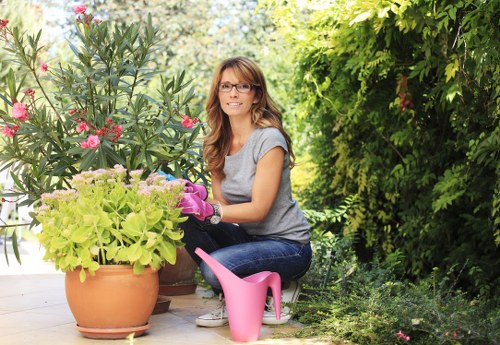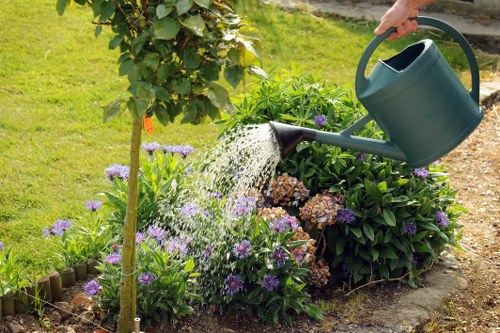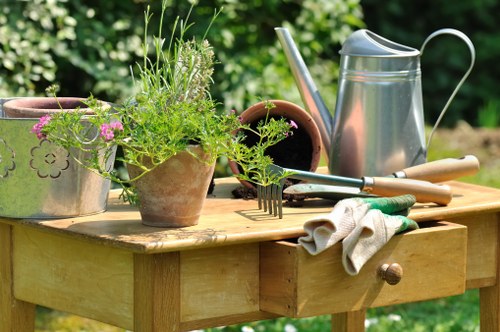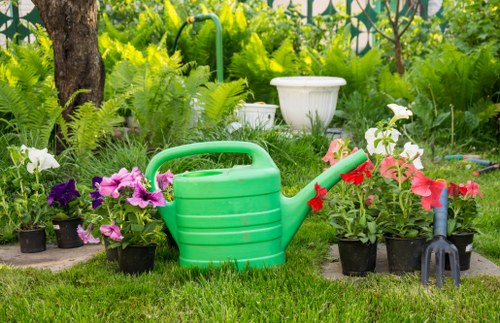Landscape Gardening: Why Mowing Isn't Always the Best Choice

When it comes to landscape gardening, mowing has long been considered a staple practice. However, many gardeners are beginning to question whether traditional mowing methods are truly beneficial for their gardens. Mowing sucks techniques may not be the optimal approach for maintaining a healthy and aesthetically pleasing landscape.
One of the primary concerns with regular mowing is the potential harm it can cause to turfgrass. Frequent cutting can stress the grass, making it more susceptible to diseases and pests. Additionally, mowing too short can prevent the grass from developing a robust root system, which is essential for its overall health and resilience.
Moreover, the environmental impact of mowing cannot be overlooked. Gas-powered mowers contribute to air pollution and greenhouse gas emissions, which are detrimental to our planet. As more people become environmentally conscious, the demand for sustainable landscaping practices is on the rise.

Alternative Landscaping Techniques
Fortunately, there are several alternatives to traditional mowing that can enhance your landscape while promoting sustainability. One such method is mulching, which involves applying a layer of organic material to the soil surface. Mulching helps retain moisture, suppress weeds, and improve soil structure.
Edging is another technique that can replace mowing. By creating defined borders around plants and pathways, you can achieve a neat and organized appearance without the need for constant grass cutting. Edging also helps prevent the spread of invasive species and reduces the need for chemical herbicides.
Furthermore, incorporating groundcovers can significantly reduce the need for mowing. Groundcovers such as creeping thyme, clover, and sedum provide lush greenery and require minimal maintenance. These plants also offer additional benefits, including attracting pollinators and improving soil health.

Benefits of Reducing Mowing
Reducing the frequency of mowing can lead to numerous advantages for both your garden and the environment. Firstly, less mowing means lower maintenance costs. By minimizing the use of lawn mowers and other equipment, you can save on fuel, electricity, and maintenance expenses.
Secondly, less mowing contributes to a healthier ecosystem. Over-mowed lawns can disrupt local wildlife habitats, whereas more natural landscapes support a diverse range of species. By embracing alternative landscaping methods, you create spaces that are more inviting to birds, insects, and other beneficial creatures.
Additionally, reducing mowing helps conserve water. When grass is allowed to grow taller, its deeper root system enhances water retention and reduces the need for frequent irrigation. This is particularly important in regions prone to drought and water scarcity.

Implementing Sustainable Landscaping Practices
Transitioning to a more sustainable landscape requires careful planning and consideration. Start by evaluating your current lawn and identifying areas where mowing can be reduced or eliminated. Consider replacing sections of grass with native plants that are well-suited to your climate and soil conditions.
Permaculture principles can also be applied to create a self-sustaining garden ecosystem. By integrating plants that support each other’s growth and repel pests naturally, you can reduce the reliance on mowing and chemical treatments.
Additionally, investing in smart irrigation systems can optimize water usage in your garden. These systems use sensors and timers to provide the precise amount of water needed, ensuring that your plants remain healthy without excess watering.

Choosing the Right Plants
Selecting the appropriate plants is crucial for a low-maintenance landscape that minimizes mowing. Opt for perennial plants that return year after year, reducing the need for replanting and extensive garden maintenance. Some excellent choices include lavender, ornamental grasses, and native wildflowers.
Hardscaping elements such as pathways, patios, and rock gardens can also reduce the need for grassy areas that require regular mowing. By incorporating these features, you can create functional and visually appealing spaces with minimal upkeep.
Furthermore, planting in layers adds depth and texture to your landscape. Combine tall shrubs with mid-height perennials and low-growing groundcovers to create a dynamic and resilient garden structure that thrives with less intervention.
Practical Tips for Minimizing Mowing
- Gradual Transition: Start by mowing less frequently to allow your grass to grow taller and develop stronger roots.
- Use Mulch Mowers: These mowers cut grass into fine pieces that can decompose and enrich the soil, reducing the need for additional fertilizers.
- Incorporate Diverse Planting: Mix ornamental plants with grass to create a varied landscape that requires less uniform maintenance.
Regular Maintenance: Even with reduced mowing, regular maintenance is essential. Keep an eye out for weeds and pests to maintain a healthy garden.
By following these tips, you can effectively minimize mowing while maintaining an attractive and sustainable landscape.
Overcoming Common Challenges
Transitioning away from traditional mowing practices can present several challenges. One common issue is dealing with existing grass that may not be well-suited to alternative landscaping methods. In such cases, gradual replacement with native plants can help ease the transition.
Another challenge is ensuring that your garden remains visually appealing during the shift. Carefully planning the layout and selecting complementary plants can maintain the aesthetics of your landscape while reducing the reliance on mowing.
Finally, educating yourself about sustainable gardening practices is essential. Attend workshops, read reputable sources, and consult with landscape professionals to make informed decisions that align with your goals.
The Environmental Impact of Mowing
Traditional mowing practices have a significant environmental footprint. Gas-powered mowers emit carbon dioxide and other pollutants that contribute to air quality degradation and climate change. Transitioning to electric or manual mowers can mitigate some of these effects, but a more comprehensive approach involves reducing the need for mowing altogether.
Soil Health: Excessive mowing can lead to soil compaction, reducing its ability to retain water and support healthy plant growth. By decreasing mowing frequency, you allow the soil to breathe and promote a thriving root system.
Furthermore, less mowing means fewer disturbances to the soil, which helps maintain its structure and prevents erosion. This is particularly important in areas prone to heavy rainfall or wind.
Enhancing Biodiversity
Encouraging biodiversity is a key benefit of reducing mowing in your landscape garden. Diverse plant species attract a variety of insects, birds, and other wildlife, creating a balanced and resilient ecosystem.
Pollinator Gardens: Planting flowers that attract bees, butterflies, and other pollinators supports their populations and enhances your garden’s productivity.
Habitat Creation: Incorporating elements like birdhouses, bat boxes, and water features provides shelter and resources for beneficial wildlife.
Cost-Benefit Analysis
- Initial Investment: While transitioning to a low-mow landscape may require upfront costs for plants and materials, the long-term savings on maintenance are substantial.
- Energy Savings: Reduced use of lawn mowers and irrigation systems lowers energy consumption and operational costs.
- Increased Property Value: Sustainable and well-maintained landscapes can enhance the curb appeal and value of your property.
By carefully evaluating these factors, you can make informed decisions that benefit both your wallet and the environment.
Embracing a Greener Future
The shift away from traditional mowing practices is not just a trend but a necessary move towards more sustainable and resilient landscapes. By adopting alternative gardening techniques, you contribute to environmental conservation and create a healthier, more beautiful outdoor space.
As more individuals and communities embrace sustainable landscaping, the collective impact can lead to significant environmental benefits. Less mowing means reduced emissions, healthier ecosystems, and a more sustainable relationship with our natural surroundings.
Ultimately, landscape gardening is evolving. By recognizing that mowing sucks in the context of modern sustainability, gardeners can explore innovative practices that harmonize with nature and promote long-term garden health.
Conclusion
While traditional mowing has been a cornerstone of landscape gardening for decades, it’s clear that alternative methods offer numerous benefits. Reducing or eliminating mowing not only enhances the health and diversity of your garden but also contributes to a more sustainable and eco-friendly environment.
Embracing practices such as mulching, edging, and incorporating groundcovers can transform your landscape into a thriving, low-maintenance oasis. The environmental advantages, coupled with cost savings and increased property value, make a compelling case for rethinking mowing in your gardening routine.
Don’t let mowing sucks hold you back from achieving a beautiful and sustainable landscape. Explore the myriad of alternatives available and take the first step towards a greener future.
Contact us today to learn more about sustainable landscape gardening and how we can help you transform your outdoor space.